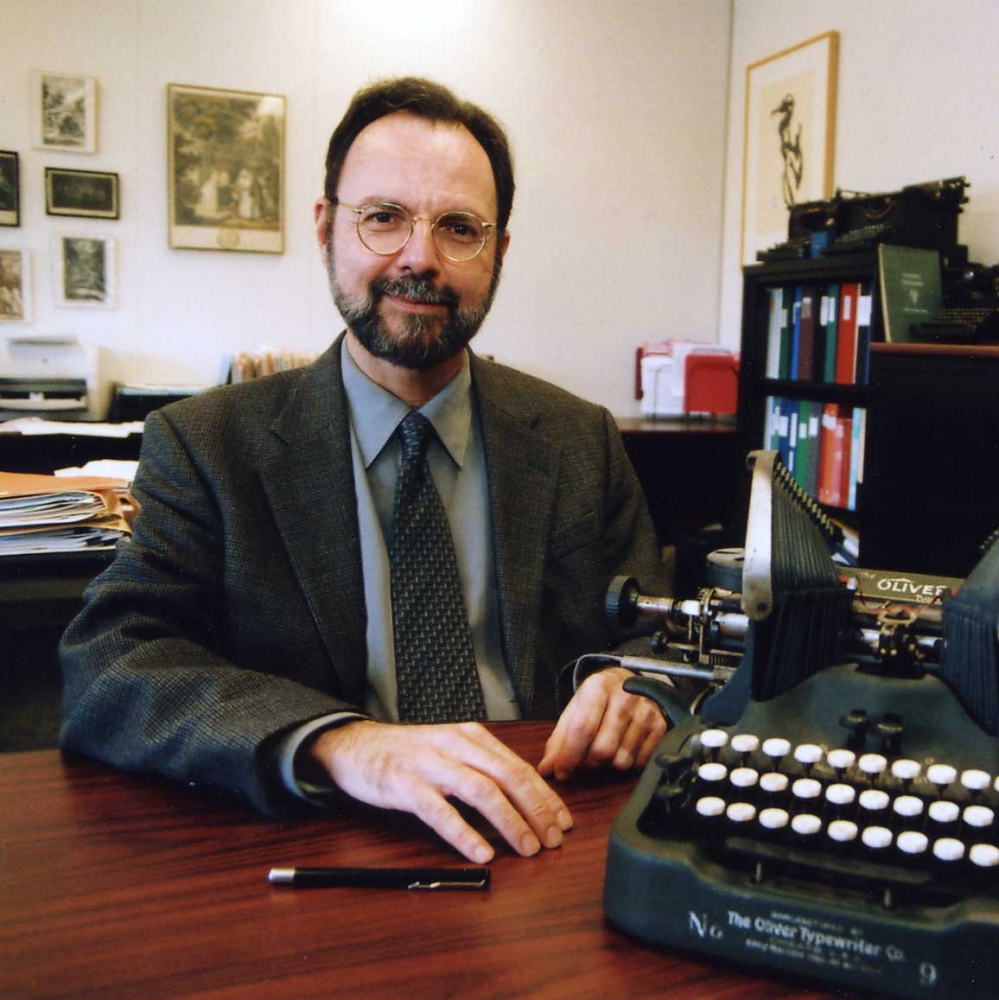
In New Book, Humanities Dean at UC Santa Barbara Frames Life Through the Experience of Art & Literature
Santa Barbara, CA -- Every picture tells a story, and in a new book, David Marshall, professor of English and of comparative literature and dean of the Division of Humanities and Fine Arts at UC Santa Barbara, explores how 18th-century readers and spectators interacted with the art and literature of their time, focusing on the significance of what he calls "aesthetic experience."
In The Frame of Art: Fictions of Aesthetic Experience, 1750-1815 (The Johns Hopkins University Press), Marshall, a specialist in 18th-century fiction, aesthetics, and moral philosophy, calls on writings by Charlotte Lennox, Jean-Jacques Rousseau, Gotthold Lessing, Lord Kames, Henry Mackenzie, David Hume and Jane Austen to examine the 18th-century reader's desire to create his or her own life as if it were a work of art.
"I'm talking about the experience of a work of art and why people were preoccupied with it," says Marshall. "This is not a sociological or empirical study. I'm looking at how the experience of art was looked at and described, and used as a metaphor. I'm interested in boundary confusions where the lines between art and reality are blurred."
Current day experiences with art tend to take place in museums where viewers have a distant, disconnected relationship with the work, he says, "but this way of viewing art disinterestedly was just beginning in the 18th century. Novels of the time describe intense experiences with art."
Marshall is interested in what it meant to see the world as though it were a work of art. In a sense, life imitated art rather than the opposite. A landscape painting, for example, served as the aesthetic model from which a garden was designed. Although 18th-century sensibilities valued nature tremendously, the garden itself became a representation of a representation of what existed in real life.
"We see some of the same issues today," Marshall says. "Debates about popular culture are reminiscent of discussions about 18th-century novels, which often presented themselves as real histories. Many of the concerns and anxieties about the relation between art and life still exist."
Citing the popularity of reality television and video games that create a virtual reality, he notes the appeal of supposedly unrehearsed and unscripted events. From the comfort of their own living rooms, audiences take on the role of voyeur, he says, and watch as the adventures of participants in shows such as "Survivor" and "The Apprentice" unfold before their eyes.
"Why has reality television become so popular? Because you'd rather watch something if it's true," he says. "But what's interesting is that those shows aren't exactly reality. They really are scripted." In other words, he adds, what viewers believe to be spontaneous and true is, in reality, planned and devised.
In selecting readings for The Frame of Art, Marshall was drawn to texts he has taught and studied for several years. He includes Austen's Mansfield Park, Samuel Richardson's Clarissa, Mackenzie's Julia de Roubigné and Lennox's The Female Quixote, among others.
One chapter discusses 18th-century theories of landscape gardening. Another focuses on the relation of poetry and painting.
"My books," says Marshall, "tend to include odd groupings of authors, bringing them together and showing a dialogue between them, a community of concern."
Marshall, who also serves as executive dean of the College of Letters and Science at UC Santa Barbara, is currently chair of the University of California President's Advisory Committee on Research in the Humanities.
Before joining the faculty at UCSB in 1998, Marshall spent 18 years at Yale University as a professor of English and of comparative literature, chair of the Department of English and director of the Whitney Humanities Center. He is the author of two earlier books, The Figure of Theater: Shaftesbury, Defoe, Adam Smith and George Eliot (Columbia University Press) and The Surprising Effects of Sympathy: Marivaux, Diderot, Rousseau, and Mary Shelley (University of Chicago Press).



